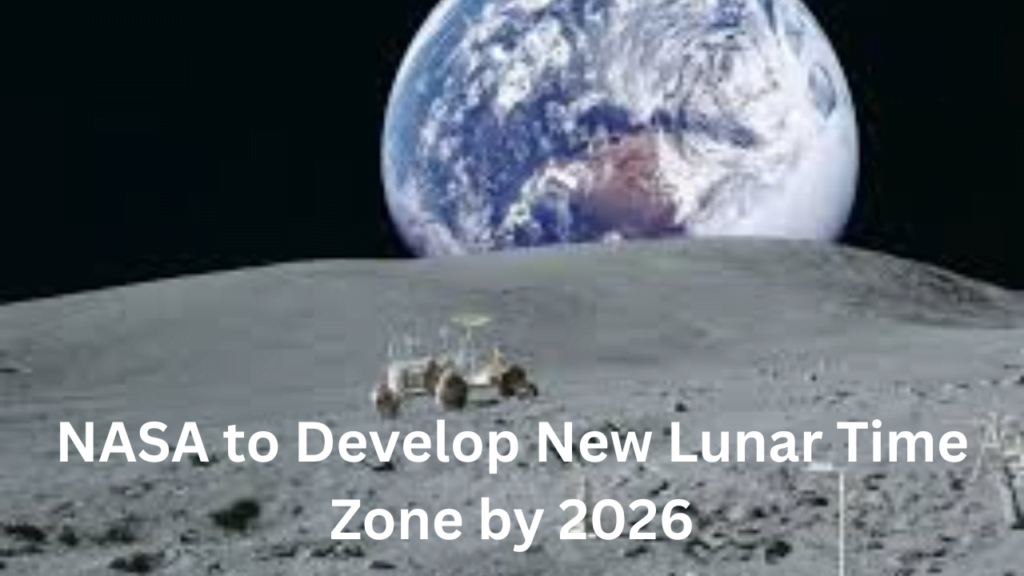NASA is to develop a new lunar time standard by 2026, according to a policy statement released by the White House on Tuesday. For the purpose of directing upcoming lunar expeditions, Coordinated Lunar Time (LTC) will create an official time reference. It arrives at the same time when (at least) the US, China, Japan, India, and Russia are starting a space race in the twenty-first century.
NASA (and the White House) are not the only ones attempting. The European Space Agency aims to establish a time zone beyond Earth’s zone.

Time moves a bit more quickly on the Moon because of its weaker gravity. NASA’s chief of space communications and navigation, Kevin Coggins, told Reuters that “the same clock we have on Earth would move at a different rate on the Moon.”
NASA is directed under the policy memo to collaborate with the Departments of Commerce, Defense, State, and Transportation in order to develop a plan for implementing LTC by December 31, 2026. International collaboration will also be important, particularly with the Artemis Accord signatories. They are a set of guiding principles for space exploration and operations that were established in 2020 and are presently shared by an expanding number of (37+) nations. That excludes both China and Russia.
“It’s critical that we establish celestial time standards for safety and accuracy as NASA, commercial enterprises, and space agencies around the world launch missions to the Moon, Mars, and beyond,” OSTP Deputy Director for National Security Steve Welby wrote in a White House press release. “Space situational awareness capabilities, navigation, and communications are all dependent on a common definition of time among operators in space, and these elements are fundamental to enabling interoperability within the U.S. government and with international partners.”
According to Einstein’s theories of relativity, time varies in relation to gravity and speed. Time runs slightly faster on the Moon due to its weaker gravity (and movement disparities with Earth). Thus, it would appear that an Earth-based clock on the lunar surface would gain 58.7 microseconds on average every Earth day. As the United States and other countries plan Moon missions to investigate, explore, and (eventually) build permanent bases, using a uniform standard will enable them synchronize technologies and missions that require exact time.
NASA’s chief of space communications and navigation Kevin Coggins told Reuters that “the same clock that we have on Earth would move at a different rate on the moon.” “Think about the U.S. Naval Observatory’s atomic clocks (in Washington). They are the nation’s heartbeat, keeping everything in rhythm. You’ll want a heartbeat on the moon.
All of Earth’s time zones are measured using Coordinated Universal Time (UTC), which the White House wants LTC to be in sync with. The memo states that it wants accurate navigation and scientific activities to be made possible by the new time zone. Additionally, it hopes that LTC will be scalable for space environments “beyond the Earth-Moon system” and resilient in the event that it loses touch with Earth.

NASA’s Artemis Program and the Global Space Race
The goal of NASA’s Artemis program is to return crewed trips to the Moon for the first time since the 1960s and 1970s Apollo missions. Artemis 2, which is scheduled to launch in September 2025 and carry four people around the Moon, was announced by the space agency in January. Artemis 3, which aims to return humans to the Moon’s surface, is currently scheduled for 2026.
As the two leading global superpowers begin their race into space, China also plans to send astronauts to the Moon by 2030. The United Arab Emirates, Japan, South Korea, and private companies have all shown an interest in going to the moon in recent years, despite the fact that no other nation has announced a crewed mission to the Moon. Russia also had a mission that didn’t go well, and India placed a module and rover on the Moon’s South Pole last year.
The Moon may play a crucial role as a stopover on the route to Mars, in addition to enabling further scientific research, industry development, and resource mining. It might test technologies while also providing fuel and supplies for future human missions to the Red Planet.
This policy is released in the time when two magnificent lunar eclipses events occurring this year: one already accomplished in Mach 2024 and another is due in September 2024.
Read more about these two events here: Lunar Eclipse Marvel: Two Stunning Total Events Await in 2024






